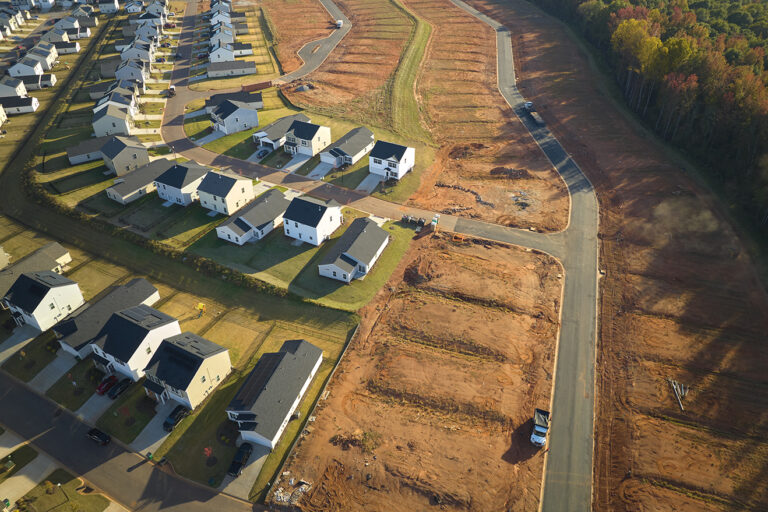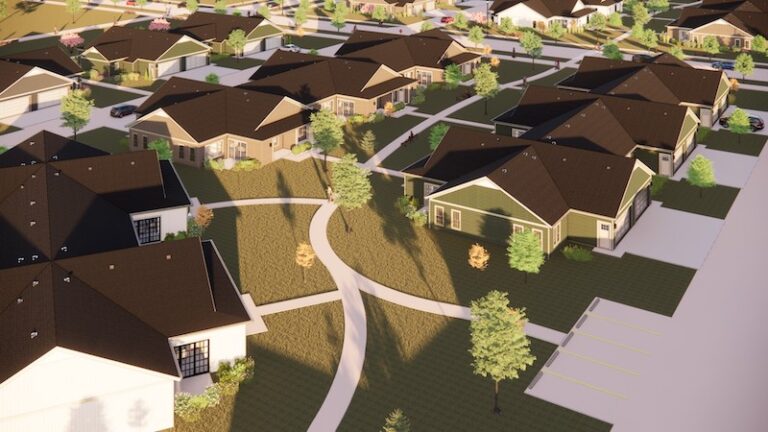Source: Forbes.com
Key Takeaways
- Many industry leaders, including Goldman Sachs, have altered their predictions for the housing market since early Fall 2022.
- While mortgage rates have dropped over the past several weeks, they’re not likely low enough to impact demand in the housing market.
- The lack of affordable housing in the U.S. is unlikely to ease up as homebuilders slow new construction due to low demand.
Since the pandemic began, housing prices have gone up, home shortages have increased, and interest rates have risen. Some changes have been purposeful, like the Fed raising rates to battle inflationary pricing. Others have been outside the realm of predictability.
Even experts in the field have changed their housing market predictions over the past few months. This isn’t surprising, as the numbers in front of us seem contradictory. Mortgage interest rates are down even as the Fed is hiking rates, and homebuilders are slowing their pace despite a housing shortage.
While it’s all a bit chaotic, there are some underlying explanations. The immediate future may not be so rosy.
Mortgage interest rates are dropping
Since the beginning of the month, we’ve seen a strange phenomenon. While the Federal Reserve continues to raise rates, interest rates on mortgages have dropped.
This could be in part due to demand. Home prices remain stubbornly high, and interest rates skyrocketed from an average of around 3% at the beginning of the year up to over 7% in October.
These circumstances have led to fewer buyers in the market since finding an affordable home has become increasingly challenging.
Beyond demand, mortgage lenders also have to worry about the bond market. Mortgages are often repackaged into mortgage-backed securities on the bond market. Investors typically look for these securities to beat out both the 10-year Treasury bond yield and inflation.
Mortgage rates are generally around 1.8 percentage points higher than the 10-year Treasury bond yield. In 2022, they’ve climbed up to three percentage points higher due to factors like inflation and the Fed’s decision to no longer purchase these securities.
What we’re seeing is likely an industry correction to account for this gap.
While rates have come down, they haven’t cooled enough to coax buyers back into the market. At the beginning of the year, you could find a mortgage offering a 3% interest rate on a 30-year fixed mortgage. Even today’s ‘lower’ rate is still a staggering 6.87% as of November 23, 2022.
Prices are likely to drop before leveling off
In October 2022, Goldman Sachs predicted a 5% to 10% drop in home values between now and March 2024. It’s predicting this decrease because there are not enough affordable homes. This means that not as many people can buy them, especially with interest rates so high.
However, this was an abrupt departure from its September 2022 predictions that housing prices would stay stable over the next 12 months, perhaps with some regional drops that would level out.
It’s important to remember that any predictions, even predictions from industry leaders, are not always accurate depictions of the future. So much can happen to alter the outcome, sometimes over the course of a single month.
Even if the 5% to 10% price drop occur, home values would stay above pre-pandemic values in most markets, according to Goldman Sachs. While some might regret the timing of their purchase, these projections wouldn’t necessarily indicate evictions like we saw during the 2008 recession.
After March of 2024, the Goldman Sachs model has home prices rising again at a more measured pace through January 2026. There are a few factors in the American housing market that are keeping a grimmer outlook at bay.
The housing shortage is likely to play a large role in home prices
America has and has had a housing shortage problem. Even in 2019, there was a shortage of 3.8 million residences available for sale or rent. The pandemic exacerbated these problems.
First, with a lack of income at the beginning of the pandemic, many people did lose their homes. While there was an eviction moratorium, not all properties qualified.
Plus, since the moratorium went on for so long, many mom-and-pop landlords could no longer afford their own mortgages. These landlords also couldn’t evict, so many chose to sell their properties to better-funded corporate landlords. Once sold, the tenant could be forced out.
Despite being better resourced, corporate landlords are less likely to be forgiving when it comes to evictions or late rent histories. They’re also more likely to increase rents to maximize profit in any market conditions, making housing even less affordable.
Sadly, this means that many people who lost their homes during the pandemic still can’t find an affordable place to live.
As home prices rose during the pandemic, more would-be homeowners who were in a better financial spot got priced out of the market and decided to continue renting. This further compounds the housing shortage issue as fewer people are rotating out of the rental market.
In addition to these issues, supply chain problems caused a massive slowdown in new builds during the pandemic. Labor shortages further exacerbated the issue. Plus, we weren’t starting from a good place in 2019.
The solutions to the housing shortage problem are varied and regionally specific. There is no one-size-fits-all solution. Since it’s likely to continue being an issue, there will probably continue to be more demand than supply. This could help buffer any potential freefall of home values.
New builds are slowing, impacting future supply
In October 2022, new building permits were down 2.4% from September and 10.1% year-over-year. Other slowdowns in the homebuilding industry included:
- New housing unit starts were down 4.2% month-over-month.
- New housing unit starts were down 8.8% year-over-year.
- Home completions were down 6.4% month-over-month.
New home completions were up 6.6% year-over-year, perhaps partly because a flood of building materials foremen had been waiting on finally worked their way out of the backed-up supply chain near the end of summer.
Since home sales are down since the Spring, many homebuilders are not planning on keeping up their pace. This means we could reasonably expect the housing shortage to compound further in the future.




